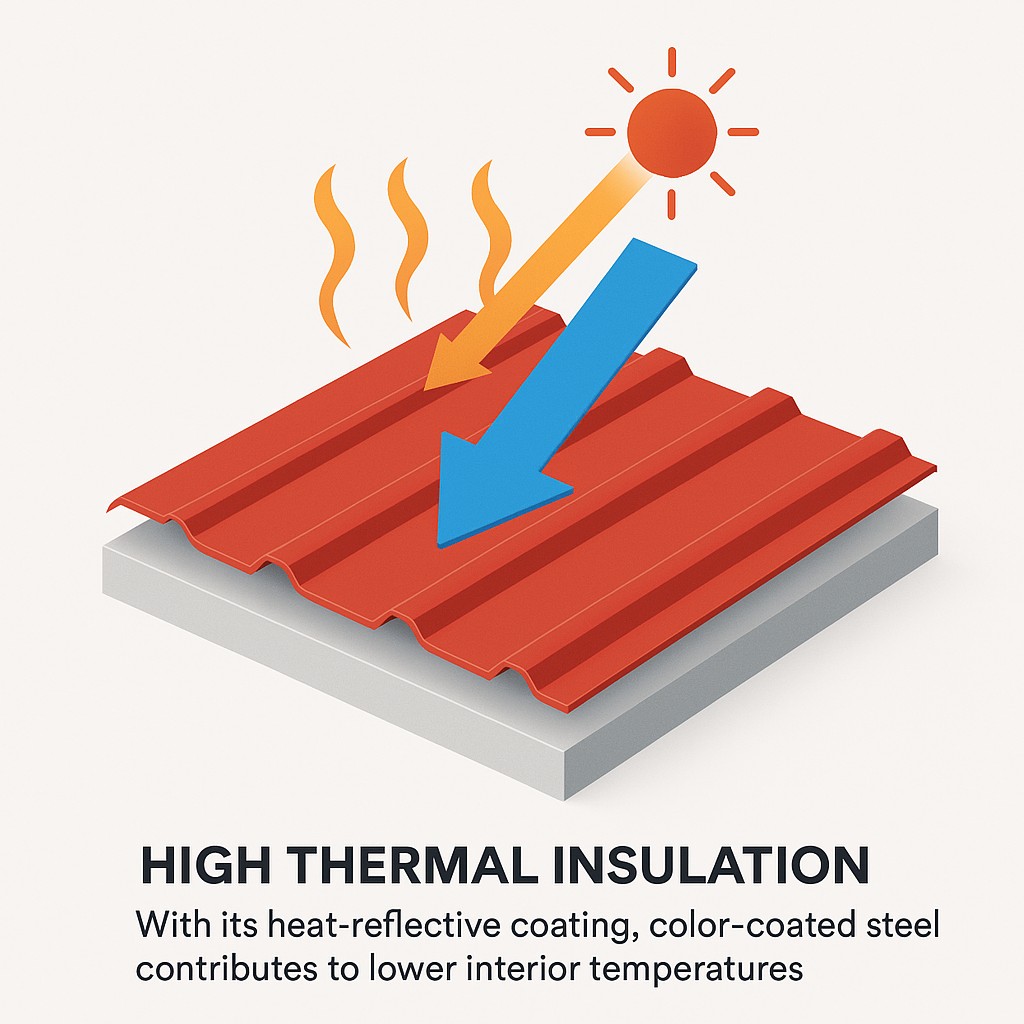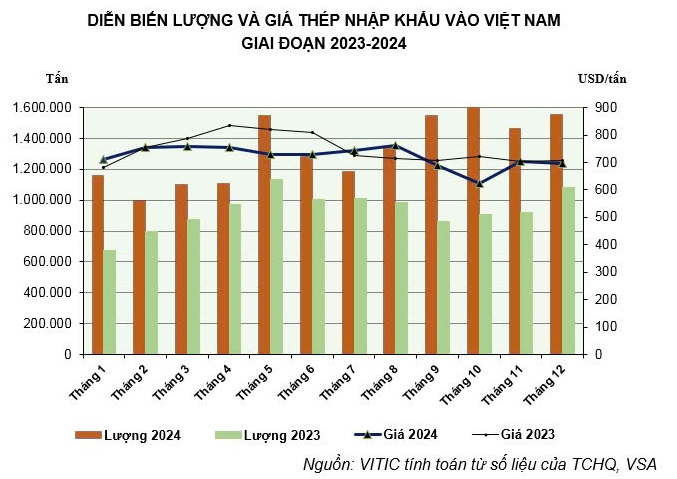Color-coated steel is taking the construction world by storm, and for good reason. It blends visual appeal, long-lasting strength, and impressive thermal insulation into one sleek package. Let’s break it down and see why this material is quickly becoming a go-to favorite in modern building projects.
What is Color-Coated Steel?
Color-coated steel starts with a solid steel base that gets a protective aluminum-zinc alloy coating to fight off rust like a champ. On top of that, a high-tech layer of color paint is added—not just for the looks, but also to shield it from the wear and tear of the outside world.
This multi-layered setup doesn’t just make the steel look sleek—it also boosts its performance in tough environments. Whether it’s intense heat, high humidity, or physical stress, color-coated steel holds its own while staying stylish.
Advantages of Color-Coated Steel
- A Splash of Style: Endless Color Choices
Color-coated steel doesn’t just play it safe—it brings the whole color wheel. Whether you’re into subtle tones like gray and white or bold picks like firetruck red or forest green, there’s a shade to match any vibe. From timeless, classic designs to sleek, modern builds, this material’s got the versatility to fit right in—and stand out.

- Rust and Corrosion Resistance
The aluminum-zinc coating on color-coated steel provides strong protection against oxidation and corrosion. This makes it particularly well-suited for environments with high humidity or occasional exposure to mild chemicals, ensuring long-term durability and performance.

- High Thermal Insulation
With its heat-reflective coating, color-coated steel contributes to lower interior temperatures by minimizing heat absorption. This enhances indoor comfort, especially in hot climates, while also reducing the energy demand for air conditioning—leading to greater energy efficiency and cost savings.

- High Durability
When properly installed and maintained, color-coated steel can offer a service life of up to 30 years. The high-quality color coating is designed to resist scratches, fading, and environmental wear—helping structures maintain their aesthetic appeal and structural integrity over the long term.
Diverse Applications of Colored Coated Steel
- Residential Buildings
Color-coated steel is widely used in roofing, exterior cladding, and partition walls for homes. Its appealing appearance, combined with strong thermal insulation, makes it a practical and stylish choice—particularly in tropical climates where heat resistance is essential.
- Industrial Facilities
In factories, warehouses, and industrial zones, color-coated steel is a key material for roofing and wall systems. Its durability and resistance to corrosion provide reliable protection for machinery, equipment, and stored goods in demanding environments.
- Commercial Spaces
From shopping malls and retail stores to cafés and showrooms, color-coated steel is often used in awnings, façades, and interior partitions. Its broad range of color options enhances the visual identity of commercial spaces, making them more appealing and modern.
Color-Coated Steel Production at Tay Nam Steel
At Tay Nam Steel, the production of color-coated steel involves a multi-stage process designed to ensure both quality and durability. This includes surface treatment of the steel substrate, application of an aluminum-zinc alloy coating for corrosion resistance, and precision color coating for both aesthetics and protection.
Advanced production technology is used to guarantee optimal adhesion, consistent coating thickness, and strong abrasion resistance across all layers. Each batch undergoes rigorous quality control to meet international standards, ensuring the final product performs reliably in diverse markets—from highly developed regions to areas with challenging environmental conditions.
Conclusion
Color-coated steel has become the material of choice for contemporary construction, thanks to its perfect blend of exceptional performance and visual appeal. With key benefits like superior durability, excellent thermal insulation, and an attractive finish, it not only enhances the comfort of living spaces but also plays a significant role in elevating overall quality of life.





